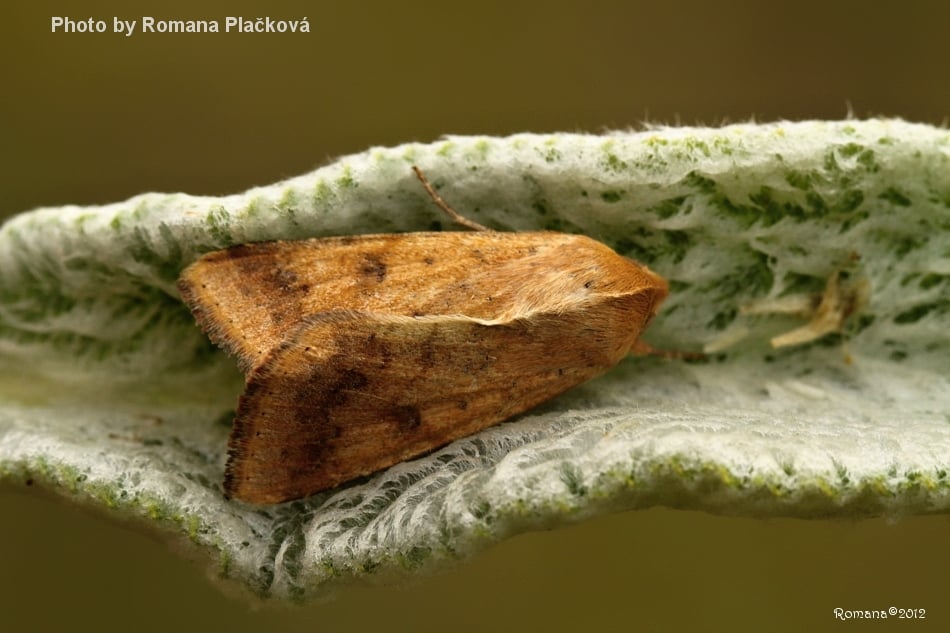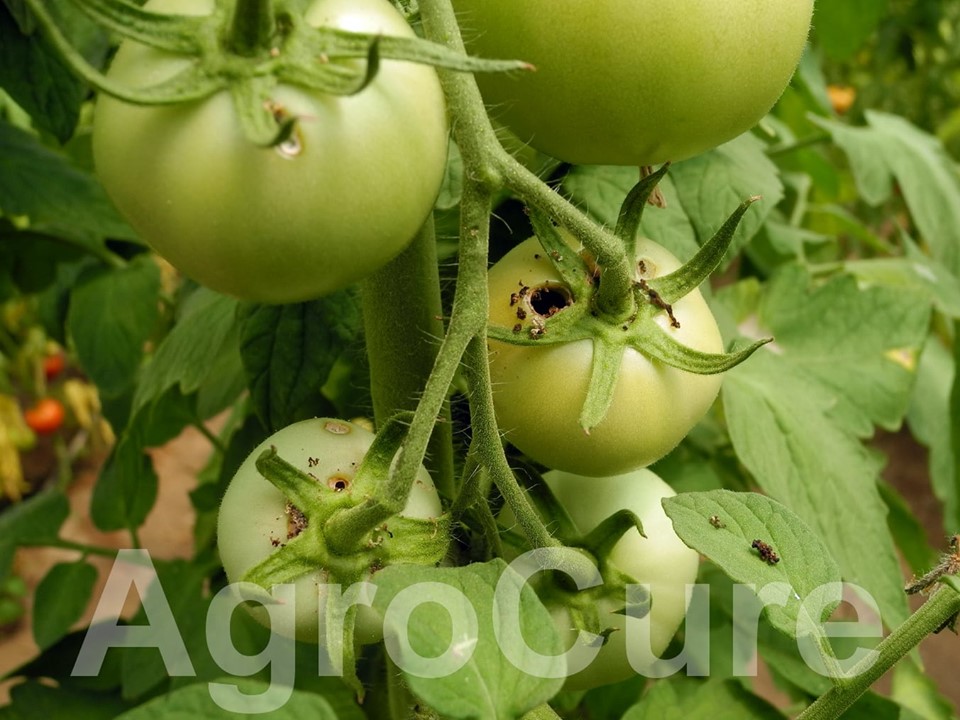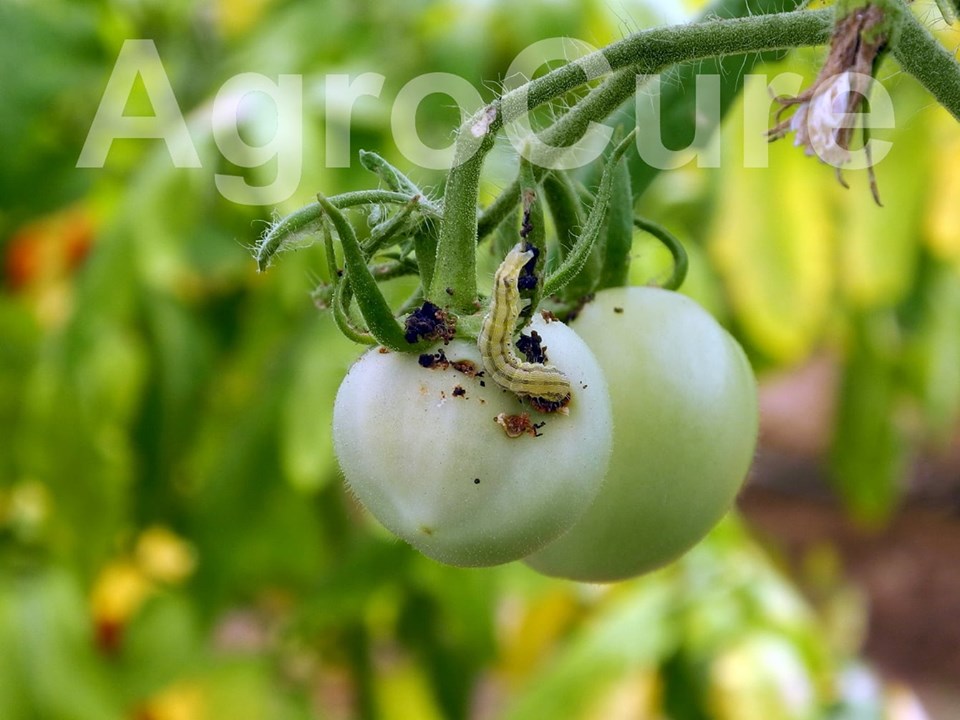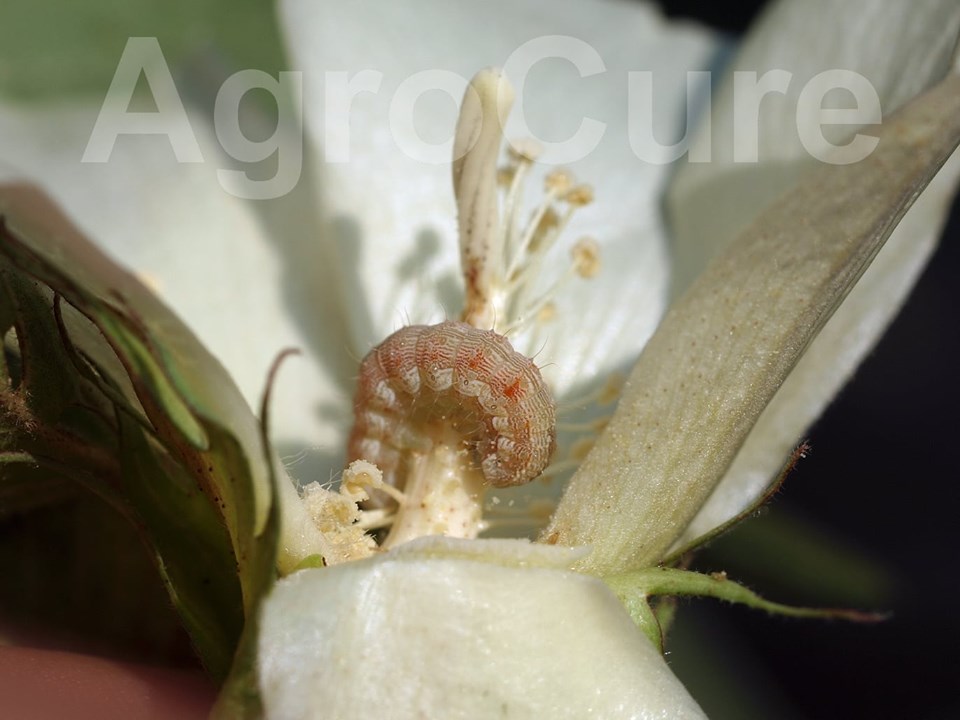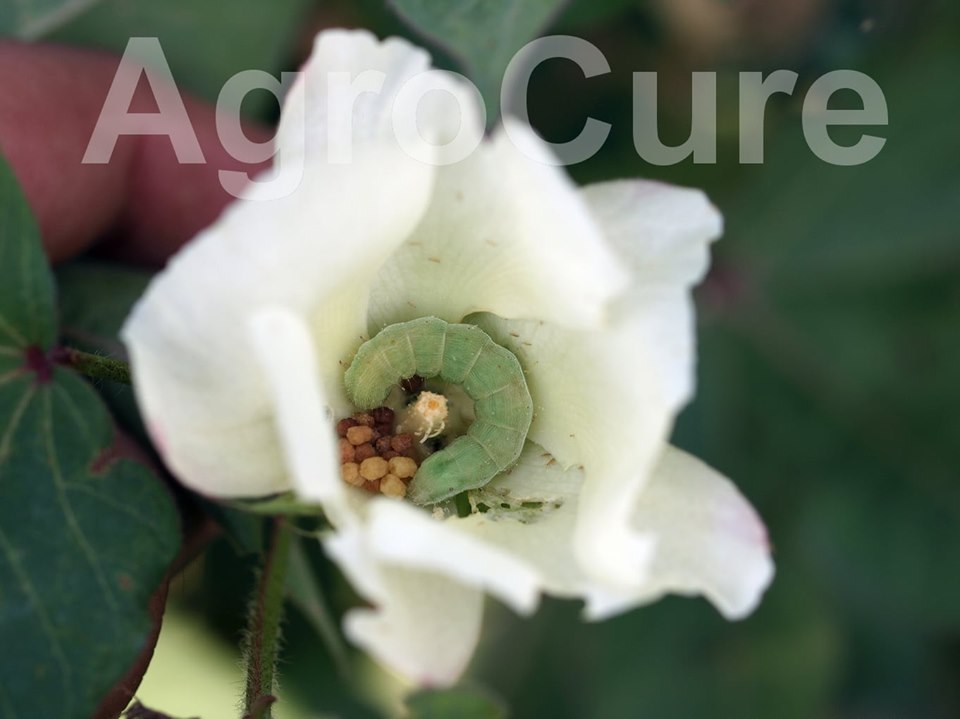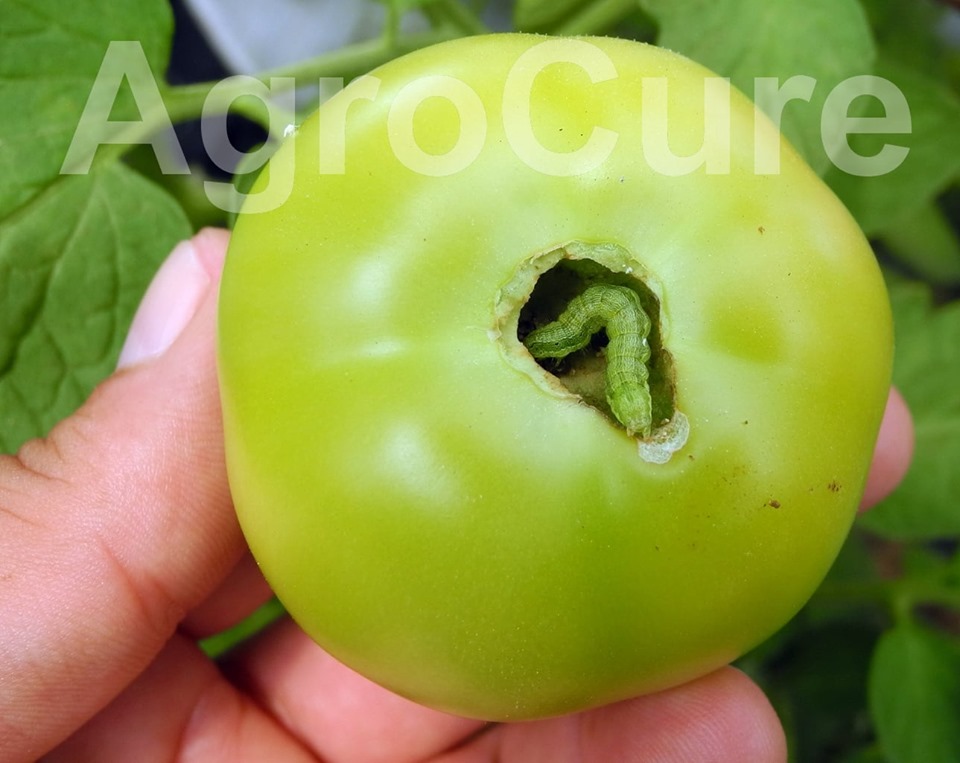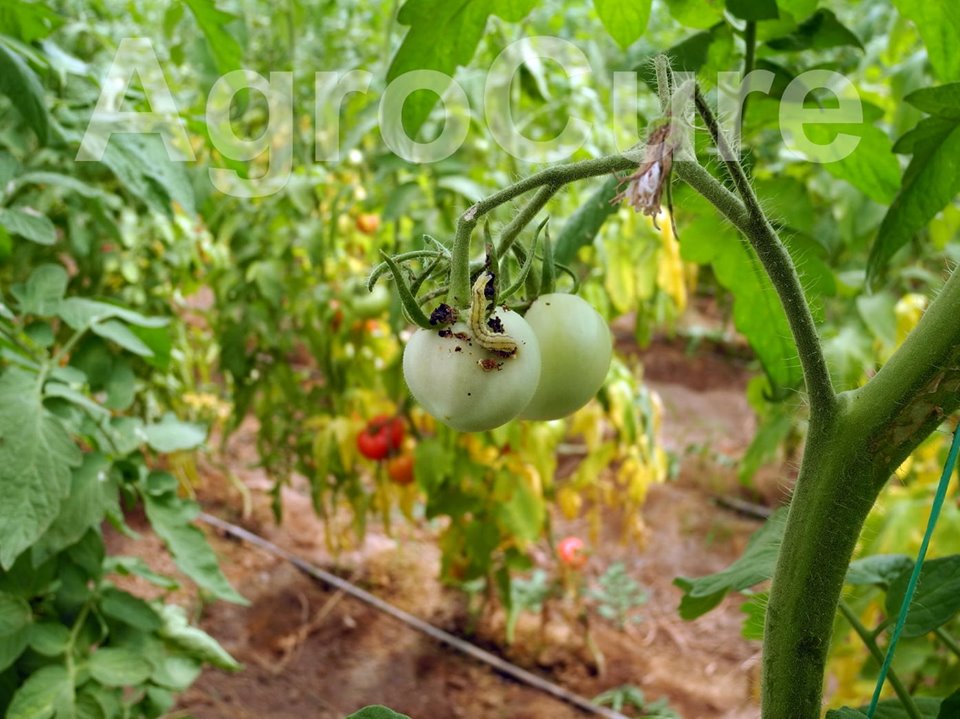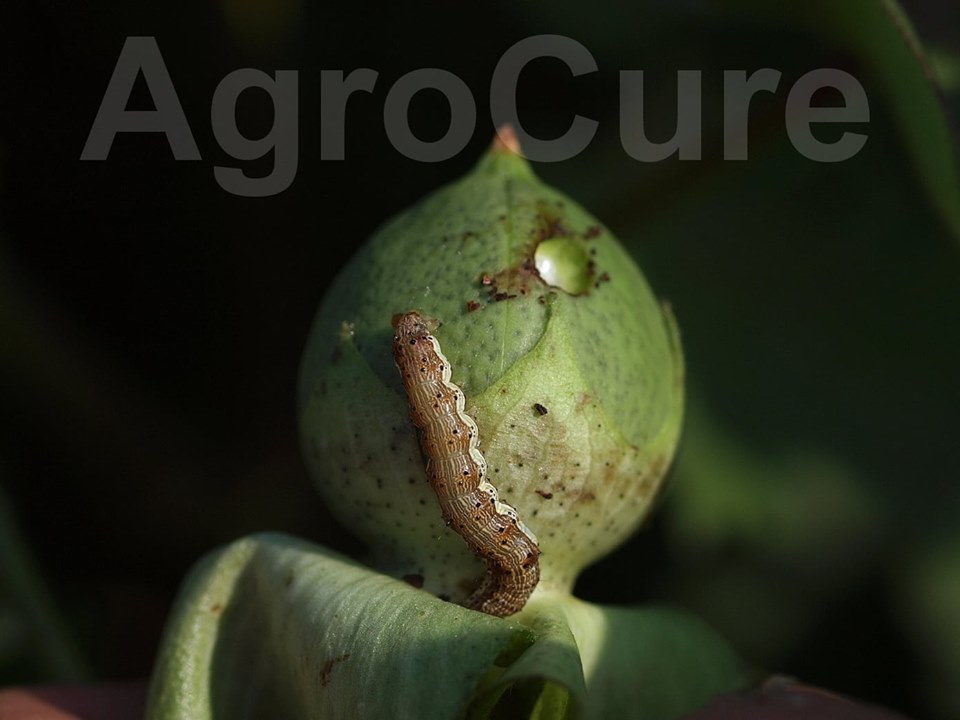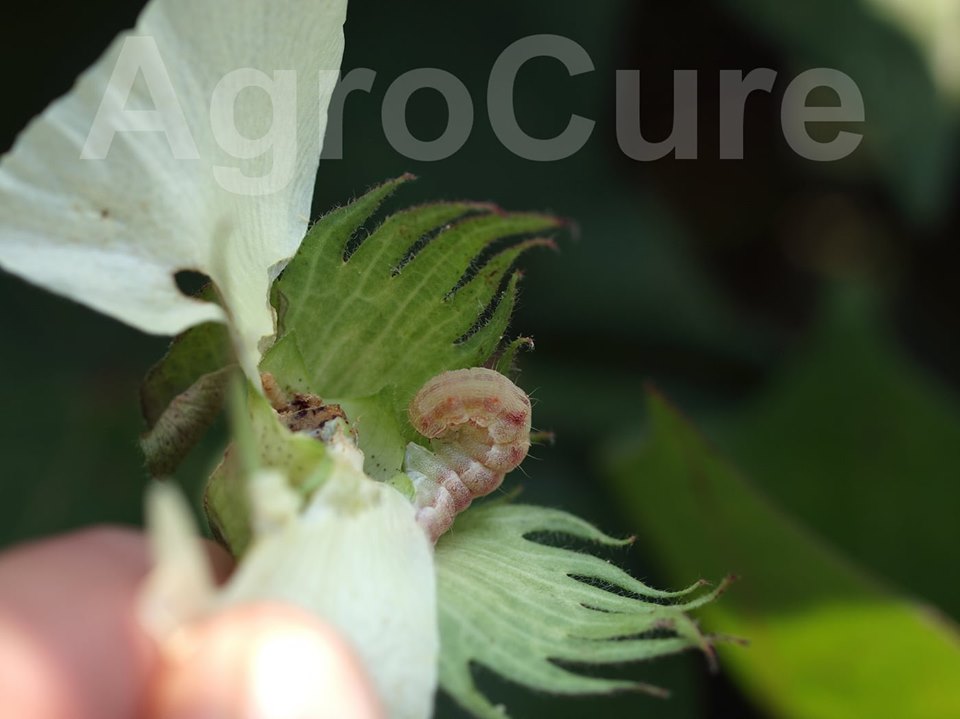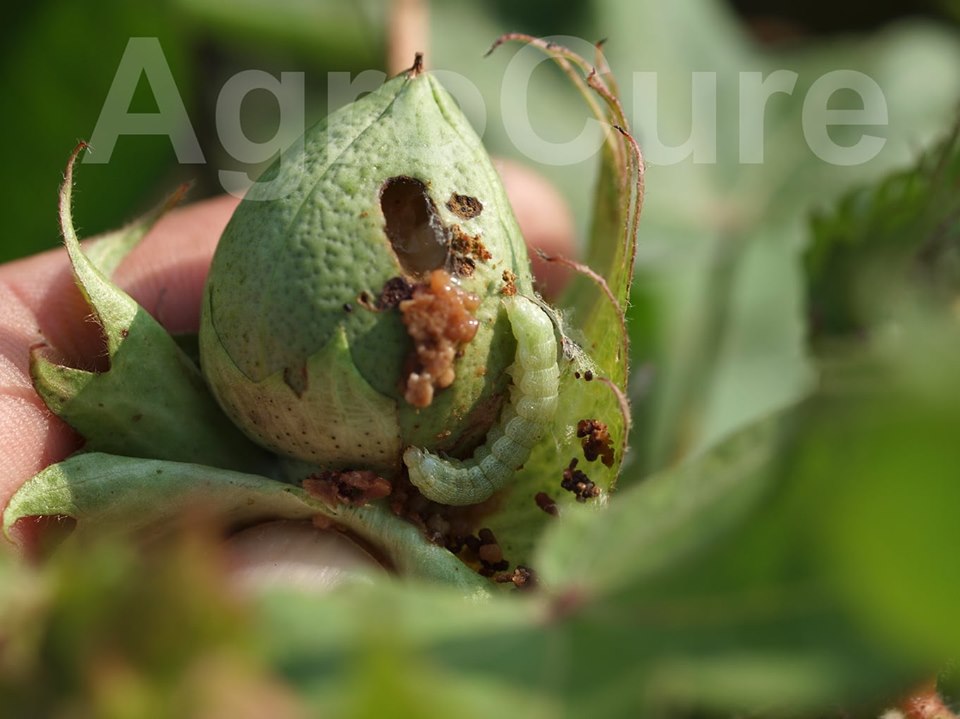Cotton bollworm (or Corn earworm or African bollworm)
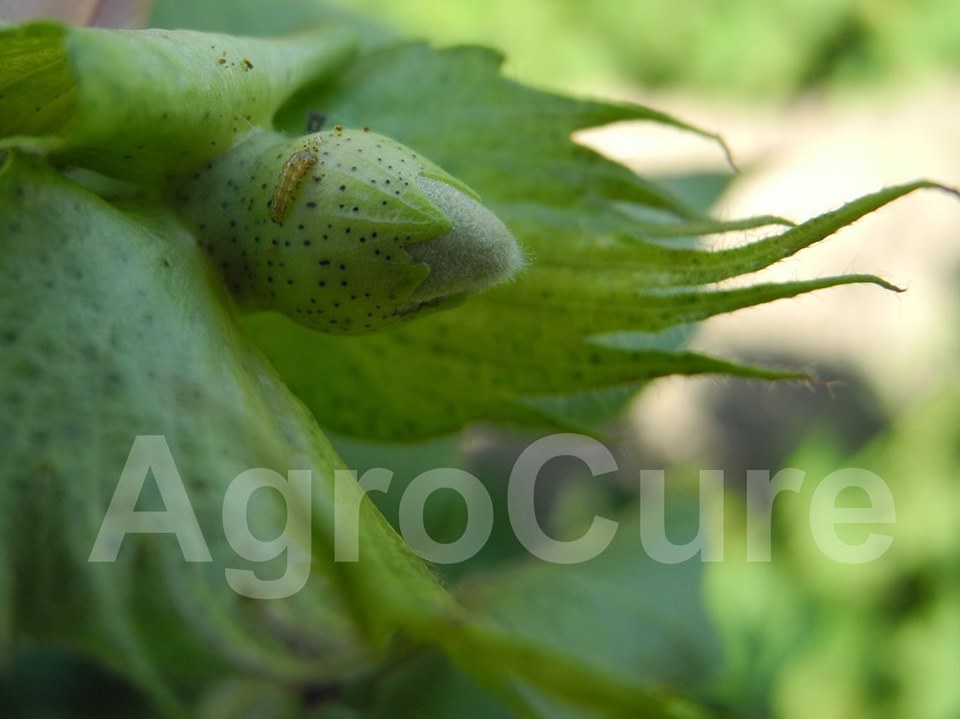
It is the caterpillar of a moth, which is the fear of cotton farmers in Greece due to the extensive damages it causes to squares, flowers and bolls of cotton and due to its difficult control. The scientific name of the pest is Helicoverpa armigera (or Heliothis armigera) and is one of the most destructive insect pests of cotton, tomato, okra, pepper, tobacco, corn and others.
The insect has 3-4 generations a year depending on the climatic conditions of the area and develops large populations from July to September, usually with a culmination in August when it causes the biggest damage to cotton. Fortunately, after a number of years with large populations and subsequent severe infestations, 2019 was a year of minor damage by cotton bollworm.
One caterpillar is not limited to a cotton boll or fruit of another plant. It can infest many organs or many fruits within a few days by eating them superficially and then moving to others, thereby multiplying the quantitative and qualitative degradation of production. Caterpillars rarely cause leaf erosion. Usually infestations are on the reproductive organs (flowers and fruits).
In general, the difficulty of insect control in cotton, especially in August, is due to the following factors:
– Bollworm population structure in August (the most destructive generation in cotton) is mixed with all stages present: eggs, caterpillars, pupae and adults. It is therefore difficult for any insecticidal treatment to focus on the most sensitive stage of egg hatching and young caterpillar
– In August, cotton plants are tall and cotton rows are closed so insecticide spray (with a horizontal bar) does not reach and cover the lower foliage of a cotton plantation
– Insecticides used today act mainly through stomach and secondarily through contact, so caterpillars that feed and live on the lower layers of cotton foliage are not properly exposed to the insecticide
Author/photos: Aris Chloridis
